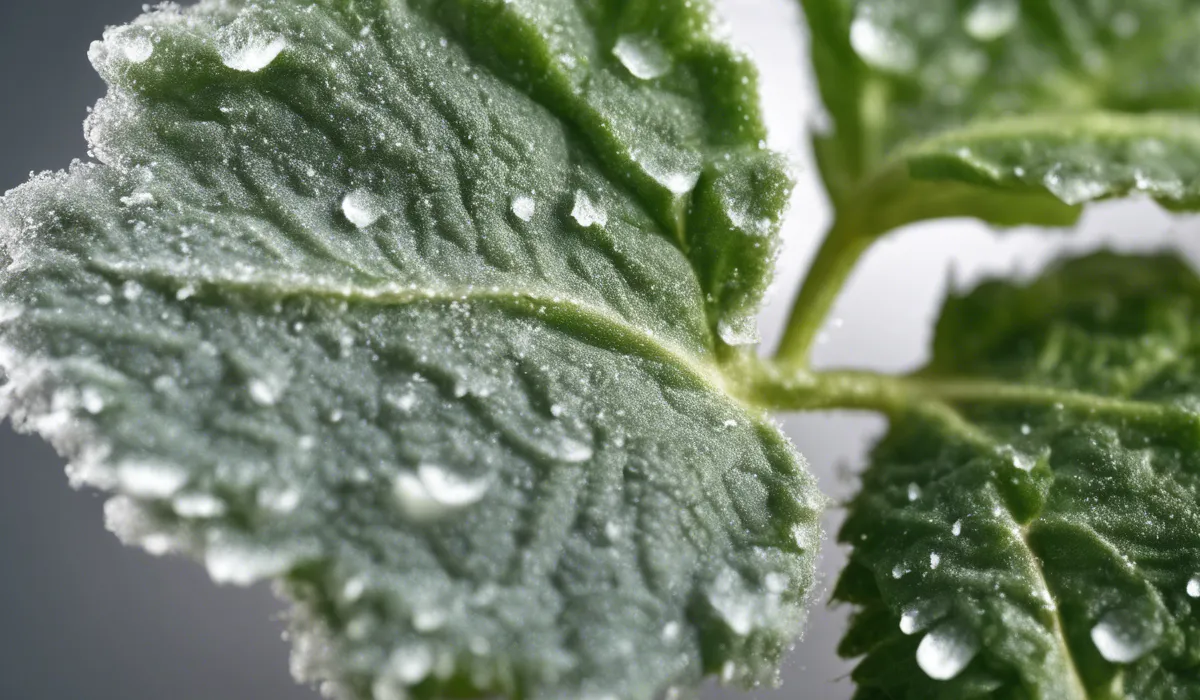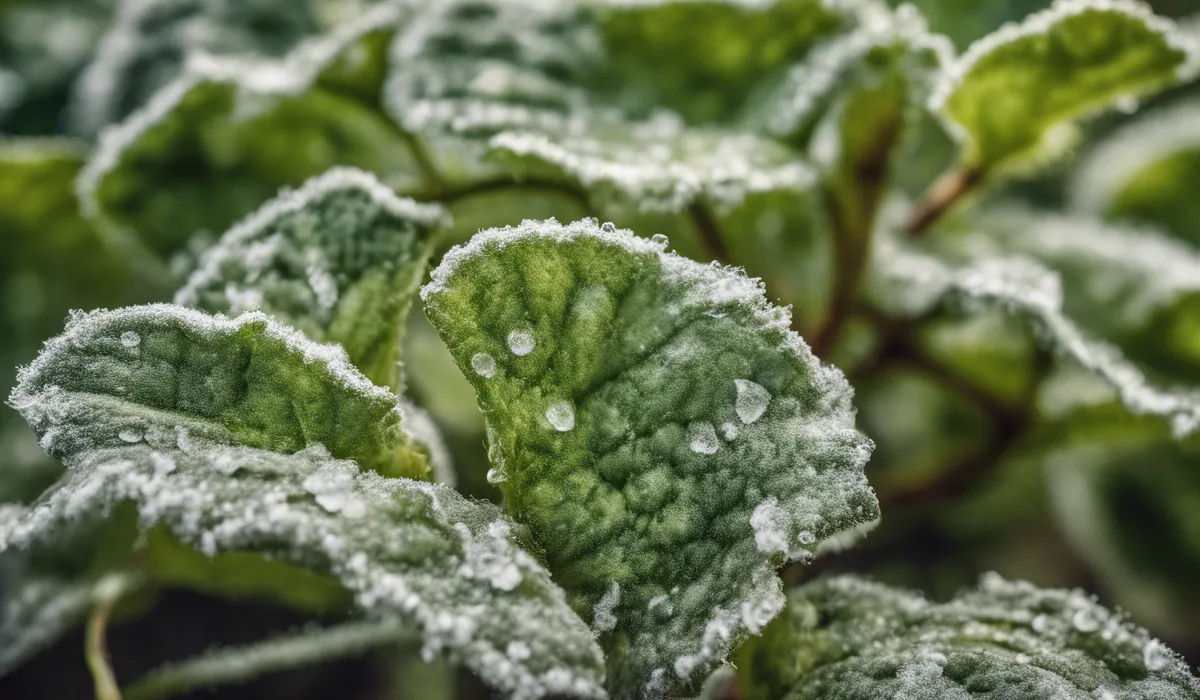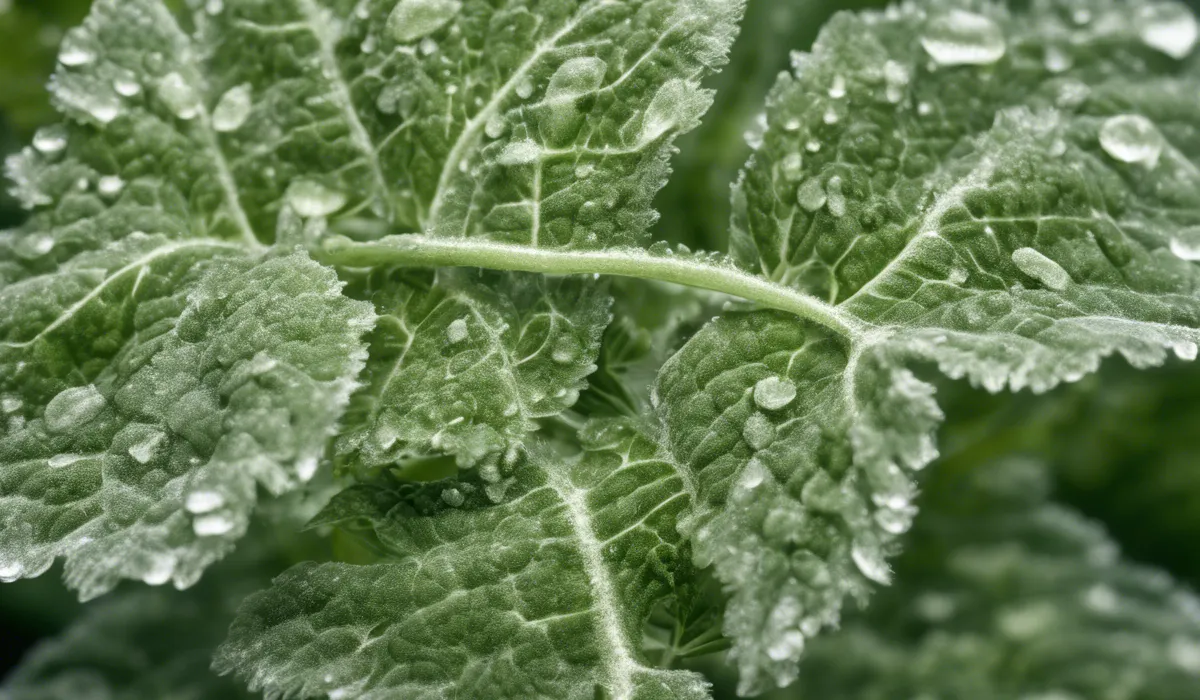Powdery mildew is generally not harmful to humans. It primarily affects plants, and while it can cause allergic reactions in some people, it is not toxic or infectious to humans.
Understanding Powdery Mildew

Definition of Powdery Mildew
Powdery mildew refers to a group of fungal diseases that attack a wide range of plants. This fungus creates a distinct white or gray powdery coating on leaves and stems. Despite its appearance, it does not typically pose a threat to humans.
It is known for the damage it causes to plants, making leaves look as though they have been dusted with flour.
Types of Plants Affected by Powdery Mildew
Many types of plants can get powdery mildew. It affects vegetables like cucumbers and pumpkins, fruits such as apples and grapes, and flowers including roses and phlox.
Even trees and shrubs are not immune to this fungus. Each powdery mildew species tends to target specific plant types, which means a variety in your garden may be impacted.
Lifecycle and Development of Powdery Mildew
The lifecycle of powdery mildew begins with spores landing on a plant. These spores germinate and form structures that extract nutrients from the plant cells. As the fungus grows, it spreads across the surface of the plant.
Over time, it produces new spores that can be carried by the wind to infect other plants. This cycle can happen very quickly in the right conditions.
Common Environmental Conditions for Powdery Mildew Proliferation
Powdery mildew thrives in warm, dry climates with high humidity levels around the plants.
It often becomes a problem in gardens and greenhouses where plants are close together, which allows the spores to spread quickly. It does not require water on the plant’s surface to grow, making it different from many other plant fungi.
Health Implications of Powdery Mildew for Humans

Direct Contact and Inhalation Risks
Coming into direct contact with powdery mildew is generally safe for most people. However, gardeners and agricultural workers should avoid inhaling the spores as it could cause discomfort.
Touching the mildew is not harmful, but it is always a good idea to wash your hands after handling affected plants to avoid spreading the spores.
Potential Allergic Reactions and Respiratory Concerns
Some individuals may experience allergic reactions to powdery mildew spores. Symptoms can include sneezing, runny nose, or itchy eyes.
For people with existing respiratory conditions, such as asthma, inhaling spores can aggravate their symptoms. Although these reactions are not common, they can be uncomfortable for those affected.
Vulnerable Populations: Individuals with Compromised Immune Systems, Allergies, or Asthma
People with weakened immune systems, allergies, or asthma are more likely to have a reaction to powdery mildew.
It is crucial for these individuals to be cautious when around infected plants. Wearing a mask or avoiding areas with high spore concentrations can help reduce the risk of experiencing adverse health effects.
Review of Scientific Studies on the Health Effects of Powdery Mildew Exposure
Research on the health effects of exposure to powdery mildew is limited, but existing studies suggest that it is not toxic or infectious to humans.
The primary concern is related to allergic reactions and respiratory issues, which have been documented in scientific literature. Overall, the risk to human health is considered low.
Mitigation and Safety Measures

Best Practices for Gardeners and Agricultural Workers
Gardeners and agricultural workers should stay informed about how to handle powdery mildew.
Regular monitoring of plants for early signs of infection, proper spacing for airflow, and maintaining clean equipment can help control the spread of this fungus. It is also beneficial to select resistant plant varieties when possible.
Appropriate Protective Gear (Masks, Gloves, etc.)
Wearing protective gear such as masks and gloves can help reduce the risk of inhaling spores or spreading them to other plants.
A mask is particularly important for those with respiratory concerns or allergies. Gloves can prevent spores from sticking to your skin, which could then be transferred to other plants or your face.
Safe Removal and Treatment of Infected Plants
Removing and treating infected plants is critical in managing powdery mildew. Infected parts of the plant should be cut away and disposed of properly, not composted, as this can spread the spores.
Fungicides can be applied to affected plants, but it is essential to follow the instructions carefully to avoid harming the plant or the environment.
Preventative Measures to Reduce the Spread of Powdery Mildew in Gardens and Greenhouses
Preventative measures include proper plant spacing, adequate ventilation, and avoiding overhead watering which can increase humidity levels.
Implementing these strategies can greatly reduce the likelihood of a powdery mildew outbreak. Additionally, regular cleaning and disinfecting of tools and surfaces can help keep the fungus at bay.
FAQs About Powdery Mildew and Human Health
Is powdery mildew dangerous to humans?
Powdery mildew is not considered dangerous to humans as it is not toxic or infectious.
Can humans get sick from powdery mildew?
Humans typically do not get sick from powdery mildew, although some may experience allergic reactions.
Are there any health risks associated with powdery mildew for humans?
The primary health risk associated with powdery mildew for humans is the potential for allergic reactions in sensitive individuals.
Should people with allergies be concerned about powdery mildew?
People with allergies should be cautious, as powdery mildew can cause allergic reactions in some individuals.
Can touching plants with powdery mildew affect my health?
Touching plants with powdery mildew is generally harmless, but if you have sensitive skin or allergies, it may cause irritation or an allergic response.
Final Thoughts
Powdery mildew predominantly impacts plants and is largely benign to humans. Although it can provoke allergic reactions in certain individuals, it remains non-toxic and non-infectious to human health. Thus, powdery mildew poses minimal risk to people.
